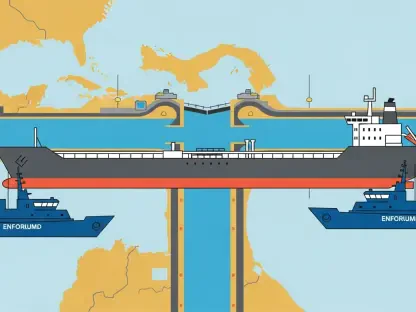Today, we’re thrilled to sit down with Christopher Hailstone, a seasoned expert in energy management, renewable energy, and electricity delivery. With his deep knowledge of grid reliability and security, Christopher offers a unique perspective on the ever-evolving landscape of global energy markets. In this interview, we dive into the International Energy Agency’s (IEA) latest outlook on oil demand, the controversial concept of peak oil, the influence of policy and politics on energy forecasts, and what these shifts mean for the future of fossil fuels and the broader energy sector.
What’s driving the IEA’s recent shift in their outlook on oil demand, particularly their prediction of growth to 113 million barrels per day by 2050 under the Current Policies Scenario?
The IEA’s updated outlook reflects a combination of real-world trends and policy assumptions. Their Current Policies Scenario, or CPS, assumes no new regulations or policies beyond what’s already in place today. Under this framework, they see oil demand climbing to 113 million barrels per day by 2050, a 13% jump from current levels. Key drivers include sustained demand for petrochemical products, which are used in everything from plastics to fertilizers, and jet fuel, as global air travel continues to grow. Additionally, slower-than-expected growth in electric vehicle adoption, especially in major markets like the U.S., plays a big role in keeping oil consumption high.
How does this new prediction contrast with the IEA’s earlier stance on peak oil demand happening before the end of this decade?
It’s a pretty significant pivot. Just a few years ago, the IEA was projecting that global fossil fuel demand, including oil, would peak before 2030 as the world transitioned to cleaner energy sources. That forecast aligned with aggressive net-zero goals and assumed rapid policy shifts toward renewables and electrification. Now, with the CPS back in play, they’re painting a picture where oil demand could keep growing for decades if current policies don’t change. It’s a acknowledgment that the transition might not happen as quickly as hoped, especially in regions where oil remains deeply embedded in economic growth.
Can you break down the different scenarios the IEA uses in their report and what they represent?
Absolutely. The IEA uses multiple scenarios to explore possible futures based on policy choices. The Current Policies Scenario, or CPS, looks at what happens if no new policies are introduced—it’s essentially a baseline of existing laws and regulations. Then there’s the Stated Policies Scenario, or STEPS, which factors in announced policies and targets, showing a more moderate path where oil demand peaks around 2030 at 102 million barrels per day before declining. These aren’t predictions but rather thought experiments to highlight how different levels of action—or inaction—shape energy trends. The CPS was actually dropped during the pandemic but brought back recently to reflect a post-crisis perspective on unchanged policy trajectories.
How has the debate around peak oil evolved in light of this latest IEA report?
The concept of peak oil—when global crude production hits its highest point before declining—has been a battleground for years. Initially, the IEA’s forecast of an imminent peak clashed with groups like OPEC, who argued it was fearmongering and could destabilize markets. With this new report suggesting oil demand could grow through mid-century, OPEC has called it a “rendezvous with reality,” implying the IEA is finally seeing the persistent role of oil. Meanwhile, critics like the U.S. Energy Secretary have dismissed earlier peak oil assumptions as unrealistic, pointing to robust demand in key sectors. The debate now seems less about if peak oil will happen and more about when—or whether—policy will force it.
What role do you think politics has played in shaping the IEA’s updated outlook, especially regarding the reintroduction of the CPS?
Politics is definitely in the mix. There’s been speculation that pressure from certain administrations, particularly in the U.S. under recent leadership, influenced the decision to bring back the CPS. This scenario, which shows prolonged oil demand growth, aligns with skepticism toward rapid renewable energy adoption and policies like aggressive electric vehicle mandates. While the IEA insists their analysis is data-driven, the timing and tonal shift suggest they’re responding to a broader political climate where fossil fuel interests are pushing back against net-zero timelines. It’s hard to ignore that dynamic.
How do you see the U.S. stance on electric vehicle growth impacting global oil demand projections?
The U.S. is a major player in the global energy market, so its approach to electric vehicles has a big ripple effect. Slower EV penetration there, driven by factors like consumer hesitancy, infrastructure gaps, and policy uncertainty, means oil consumption in transportation stays higher for longer. The IEA’s CPS reflects this reality, showing robust oil use partly because of lagging electrification in key markets like the U.S. If policies shift to accelerate EV adoption, as seen in their STEPS scenario, the outlook changes dramatically. It’s a clear example of how national decisions can sway global trends.
What are the broader implications of the IEA’s report for the energy market and the transition to cleaner energy sources?
This report sends mixed signals to the energy market. On one hand, the CPS could embolden fossil fuel investments by suggesting decades of growing oil demand, especially in areas like LNG exports or petrochemicals. On the other hand, scenarios like STEPS show how fragile that demand is if policies tilt toward renewables, efficiency, and electrification. For the clean energy transition, it’s a reminder that without stronger policy action, we’re on a path where global temperatures rise well beyond the critical 1.5 degrees Celsius threshold. It underscores the urgency for governments and industries to commit to transformative change rather than banking on a “business as usual” future.
Looking ahead, what is your forecast for the trajectory of oil demand and the concept of peak oil over the next decade?
Over the next ten years, I think oil demand will remain stubbornly high unless we see aggressive, coordinated policy action globally. The IEA’s STEPS scenario, with a peak around 2030, feels plausible if current commitments to renewables and electrification hold firm. But if we stick closer to the CPS trajectory, driven by slow EV growth and rising demand in Asia for petrochemicals and aviation fuel, we might not see a peak until much later. The wildcard is policy—unexpected shifts, like major carbon pricing or renewable subsidies, could tip the scales. Either way, the idea of peak oil will stay contentious until data shows a clear, irreversible downturn in consumption.









